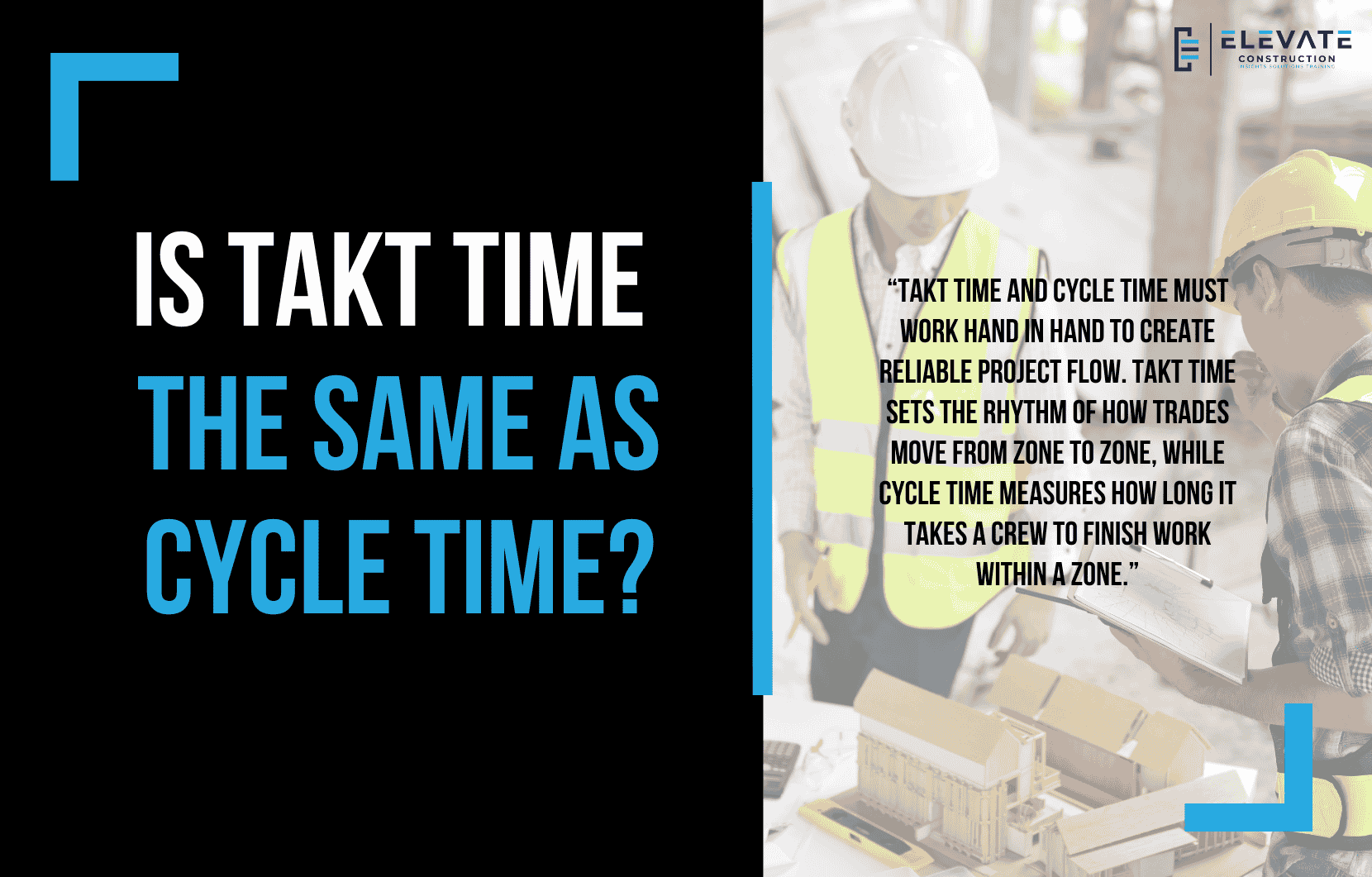Takt Time vs Cycle Time: What’s the Difference in Construction?
Is Takt time the same as cycle time? This is one of the most common questions I get, and while I’ve covered it visually before, today I want to break it down clearly in this blog. We’ll look at what each term means, why they’re often confused, and how you can apply them to construction projects.
What is Takt Time?
Takt is the rhythm of work in your plan. Specifically, it’s the rhythm at which a trade moves from zone to zone to zone in a “train” of trades.
A train is simply the sequence of trades grouped behind each other as they move through a project. Takt time is the speed at which this happens. At every takt interval, a handoff occurs, and trades move to the next zone.
Yes, trains within the same phase can operate with different takt times, depending on the work.
What is Cycle Time?
Cycle time is different. In manufacturing, it refers to how long it takes to produce one unit. In construction, it’s how long it takes to complete one scope of work within a zone.
That includes:
- Gathering materials and preparation.
- Mobilization.
- Execution of work.
- Punch list and demobilization.
I call this the in-zone cycle time. There’s also a broader customer cycle time, which measures how long it takes to deliver something from the moment it’s ordered to the moment it’s received.
Why the Confusion?
These terms are often misunderstood because they come from manufacturing. Many assume construction is different, but in reality, it isn’t.
- In line manufacturing, the product flows.
- In construction, the trades flow.
The difference lies in the flow unit: in one case it’s the product, in the other it’s the sequence of trades.
A Practical Example
Consider prefabricated pods, bathroom units, or wall assemblies.
- If pods sit on rails or mobile platforms, the product flows down the line while workers stay put.
- If that setup isn’t possible, the trades flow through stationary pods, working in batches.
Both approaches are valid, but the flow unit changes depending on the setup.
Why Both Matter
Some ask: “Can I just use one and ignore the other?”
The answer is no.
- Cycle time measures how fast each crew can work in a zone.
- Takt time measures how fast the whole train of trades can move together.
Think of a train with cars that have different speed limits: even if one car can go 240 mph, if another can only go 80 mph, the whole train is limited.
To improve takt time, you must improve individual cycle times. To support cycle times, you must maintain takt time.
How to Calculate Them
- Cycle time = how long it takes a crew to start and finish in a zone (including prep and demobilization).
- Takt time = the aggregate rhythm based on all cycle times working together.
If cycle time and takt time don’t match, you’ll face production problems. Ideally, takt time should allow each crew to finish slightly under the rhythm, with a buffer for flow.
Teaching Crews
Start with cycle time. Train crews to identify value-add vs. non-value-add activities, eliminate waste, and narrow their cycle time. Once every crew operates at a similar pace, takt time naturally stabilizes.
Final Thoughts
Understanding takt time and cycle time is essential for achieving flow in construction.
- Takt time creates rhythm across trades.
- Cycle time ensures each trade can fit within that rhythm.
Together, they unlock smoother projects, fewer delays, and more predictable outcomes.
Key Takeaway
Takt time and cycle time must work hand in hand to create reliable project flow. Takt time sets the rhythm of how trades move from zone to zone, while cycle time measures how long it takes a crew to finish work within a zone. To improve takt time, cycle times must be reduced, and without balancing the two, projects will struggle to stay on track.
If you want to learn more we have:
-Takt Virtual Training: (Click here)
-Check out our Youtube channel for more info: (Click here)
-Listen to the Elevate Construction podcast: (Click here)
-Check out our training programs and certifications: (Click here)
-The Takt Book: (Click here)
Discover Jason’s Expertise:
Meet Jason Schroeder, the driving force behind Elevate Construction IST. As the company’s owner and principal consultant, he’s dedicated to taking construction to new heights. With a wealth of industry experience, he’s crafted the Field Engineer Boot Camp and Superintendent Boot Camp – intensive training programs engineered to cultivate top-tier leaders capable of steering their teams towards success. Jason’s vision? To expand his training initiatives across the nation, empowering construction firms to soar to unprecedented levels of excellence.
On we go

